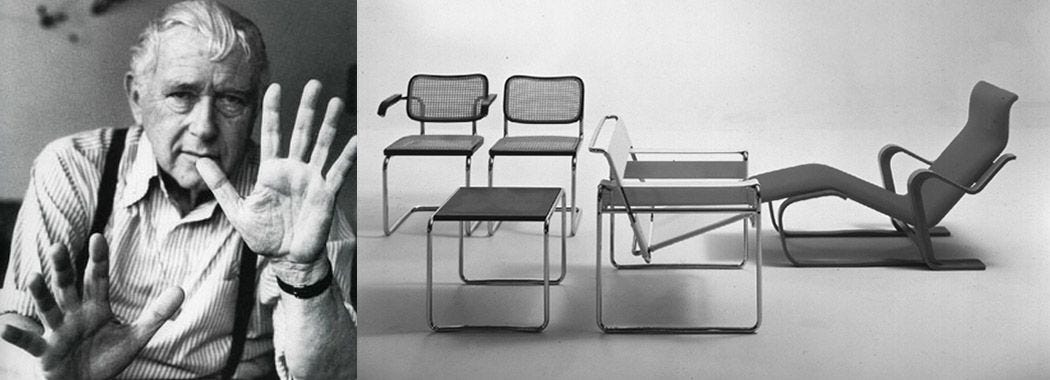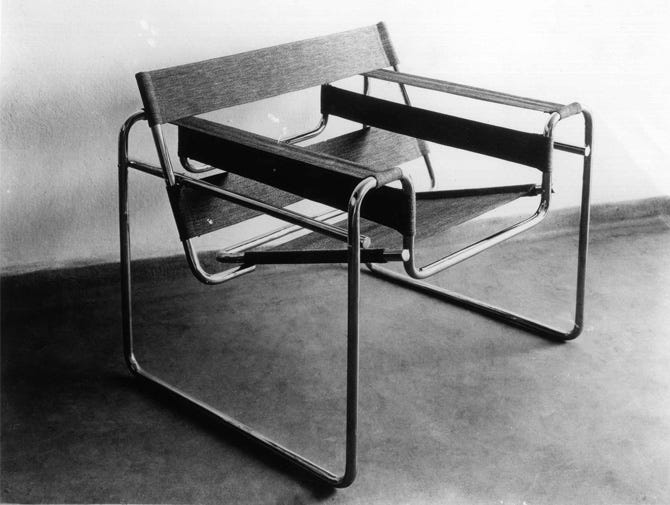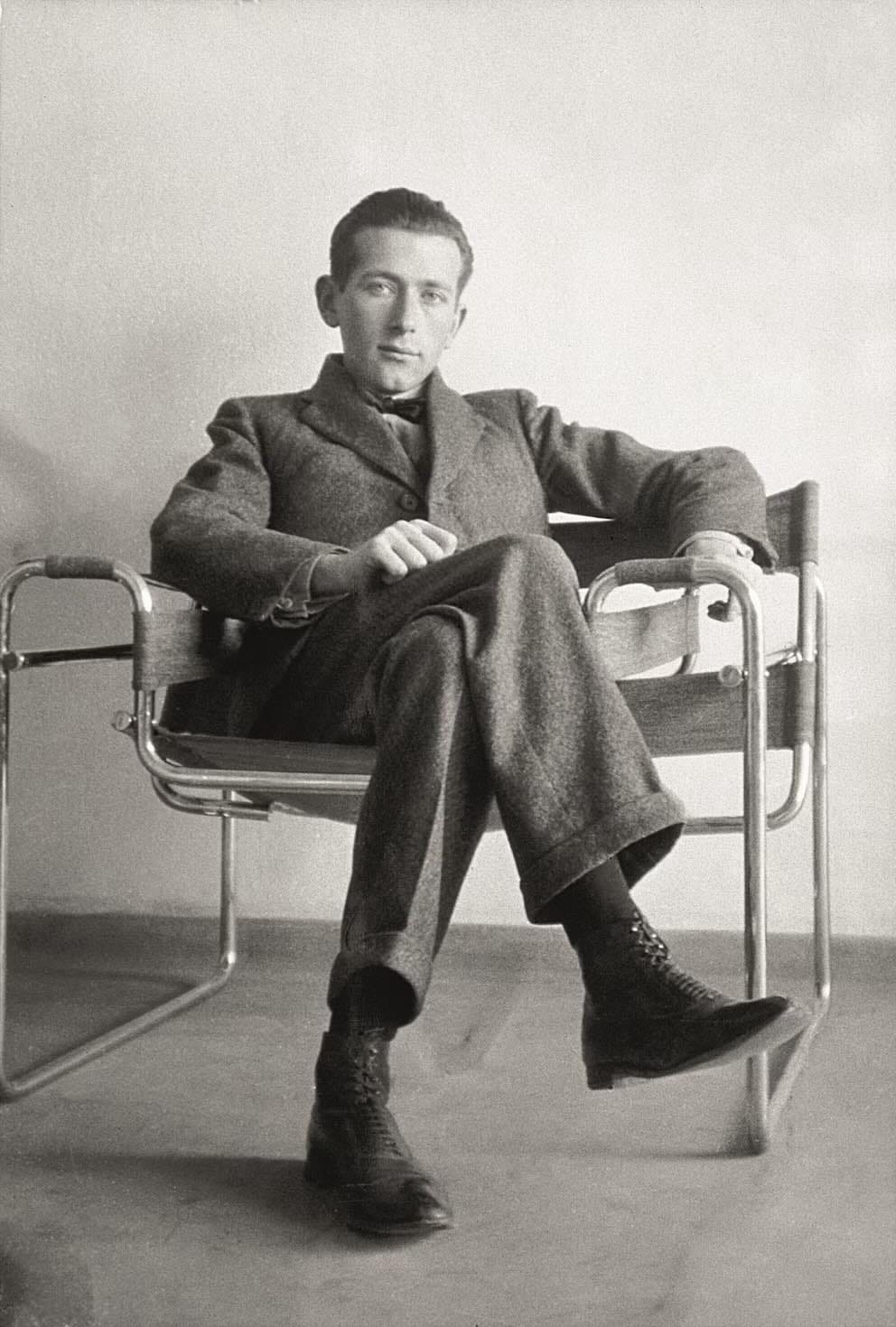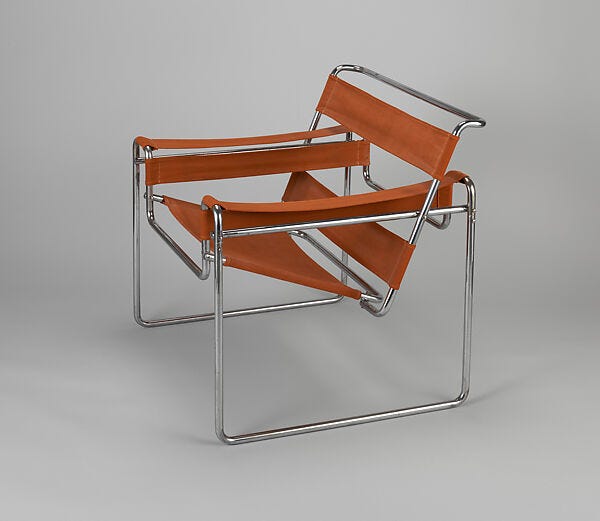Marcel Breuer and the Wassily Chair
Curated Mid-Century Modern Home Listings 📍
Marcel Breuer was born in 1902 in Pécs, Hungary. He enrolled at the Bauhaus in Weimar, Germany, at the age of 18. The Bauhaus School, founded by Walter Gropius, aimed to unify architecture, design, and art education under one fresh, modern philosophy. Breuer quickly distinguished himself as a talented student and became a “junior master” at Bauhaus by the age of 22. He led the furniture workshop from 1924 to 1928.
Around this time, Breuer became interested in industrial materials and manufacturing methods, applied to everyday objects. He was inspired by the lightness and durability of tubular steel used in bicycle frames and experimented with the material to create modern furniture that could be mass-produced. In 1925, he designed what would become one of the most iconic chairs of the 20th century. Originally called the Model B3, it was constructed using nickel-plated tubular steel and taut canvas or leather strips. The frame was formed from a single continuous line of steel tubing, bent into a geometric shape to form the seat, back, and armrests. The chair had no traditional legs or solid body, which made it appear open and lightweight.
“At that time I was rather idealistic. 23 years old. I made friends with a young architect, and I bought my first bicycle. I learned to ride the bicycle and talked to this young fellow and told him that the bicycle seems to be a perfect production because it hasn’t changed in the last twenty, thirty years. It is still the original bicycle form. He said, “Did you ever see how they make those parts? How they bend those handlebars? You would be interested because they bend those steel tubes like macaroni.”
"This somehow remained in my mind, and I started to think about steel tubes which are bent into frames—probably that is the material you could use for an elastic and transparent chair. Typically, I was very much engaged with the transparency of the form.
"That is how the first chair was made…I realised that the bending had to go further. It should only be bent with no points of welding on it so it could also be chromed in parts and put together. That is how the first Wassily was born. I was myself somewhat afraid of criticism. I didn’t tell anyone I was doing these experiments actually. [Wassily] Kandinsky, who came by chance to my studio when the first chair was brought in, said, “What’s this?” He was very interested and then the Bauhaus got very interested in it. A year later, I had furnished the whole Bauhaus with this furniture.”
-Marcel Breuer
Breuer was influenced not only by industrial design but also by the abstract art of his time. One of his colleagues at the Bauhaus was Russian-born painter Wassily Kandinsky who had joined the Bauhaus faculty in 1922. Born in 1866 in Moscow, Kandinsky originally studied law and economics but shifted to painting after feeling unfulfilled. He moved to Germany in 1896 before his time at Bauhaus. Kandinsky is often credited with creating one of the first purely abstract paintings in 1911. His work focused on the emotional power of color and shape. At the Bauhaus, Kandinsky taught classes on color theory and form and was a respected figure among students and fellow faculty.
Friends, Breuer and Kandinsky lived and worked in close proximity in Dessau. According to later accounts, Kandinsky admired the chair Breuer had designed for his own use in the faculty housing. Although there is no record that Kandinsky commissioned the chair, he expressed admiration for its design and owned an early version. When the chair was reissued in the 1960s by Italian manufacturer Gavina, the company renamed it the "Wassily Chair" in honor of Kandinsky’s appreciation and association with the design.
The Wassily Chair was one of the first pieces of furniture to use bent steel tubing as its primary structure. This construction technique was made possible by recent innovations in metal manufacturing, particularly the seamless steel tubing produced by the Mannesmann process. Importantly, the chair’s design required no welding. Instead, the tubes were connected using screws and clamps, allowing it to be assembled and disassembled easily. A radical departure from traditional furniture at the time, the chair eventually became a symbol of modernist design. It aligned with the Bauhaus goals of function, efficiency, and reduction of form. It was not widely produced during the 1920s, but its legacy grew over time. In 1962, Italian furniture company Gavina began manufacturing the chair commercially. In 1968, Knoll acquired Gavina and began distributing the Wassily Chair worldwide.
The Wassily Chair remains in production today (you can buy one here) and is included in the permanent collections of many major museums, including the Museum of Modern Art in New York and the Victoria and Albert Museum in London. It is considered one of the earliest and most influential examples of modern furniture design.
GEMS FOR SALE THIS WEEK
9031 Hollywood Hills Rd, Los Angeles, CA 90046
5228 Escalante Dr, La Canada Flintridge, CA 91011
945 Linda Vista Ave, Pasadena, CA 91103
Upgrade to see more live listings.
Keep reading with a 7-day free trial
Subscribe to Mid-Century Mondays to keep reading this post and get 7 days of free access to the full post archives.








